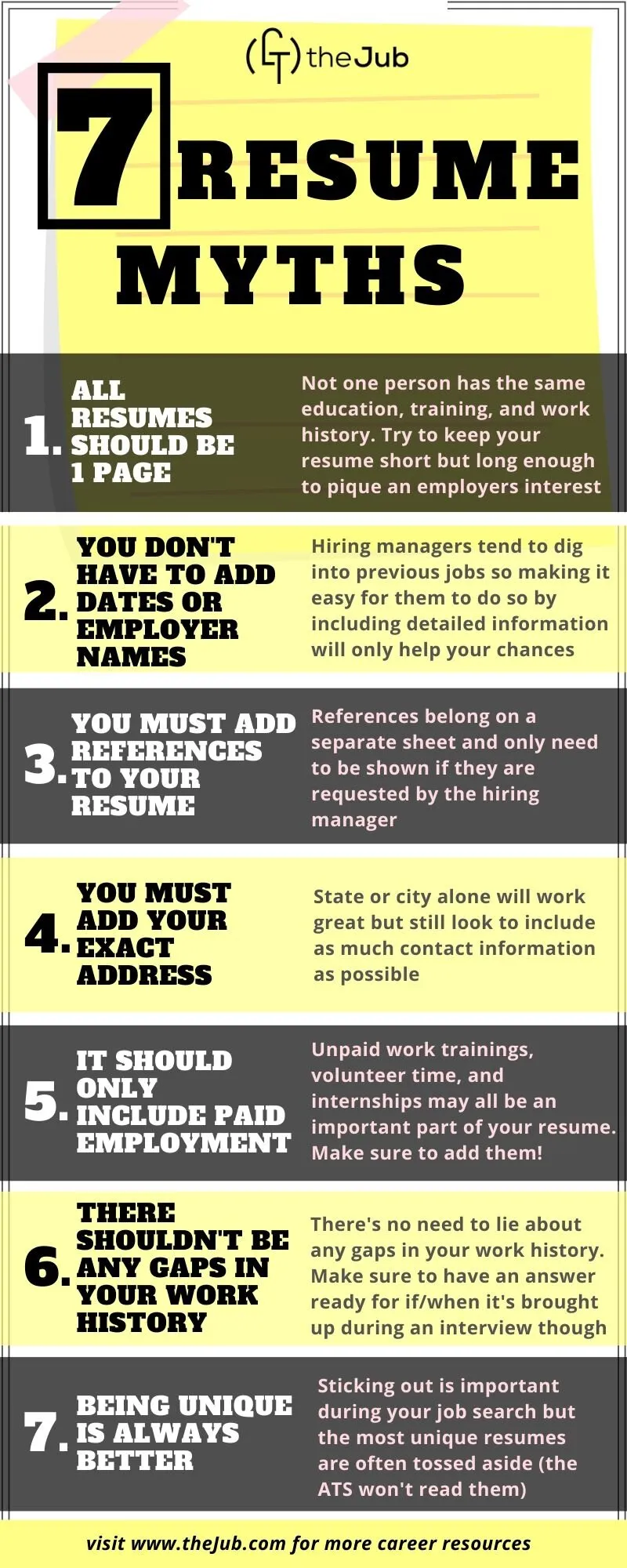Resume Myths
Creating that perfect resume is a tough challenge but arguably the most important aspect of your job search. With abundant resume writing information online today, it can be difficult to distinguish right from wrong. To help separate fact and fiction, here’s the truth behind some of the more common resume myths.

Resume Myths (Text)
Seven resume myths. All Resumes Should be 1 Page. Not one person has the same education, training, and work history. Try to keep your resume short but long enough to pique an employer's interest. You Don't have to add dates or Employer names. Hiring managers tend to dig into previous jobs, so making it easy for them to do so by including detailed information will only help your chances. You must add references to your resume. References belong on a separate sheet and must only be shown if the hiring manager requests them. You must add your exact address. State or city alone will work great but still look to include as much contact information as possible. It should only have paid employment. Unpaid work training, volunteer time, and internships may all be an important part of your resume. Make sure to add them! There shouldn't be any gaps in your work history. There's no need to lie about any gaps in your work history. Make sure to have an answer ready for if/when it's brought up during an interview, though. Being unique is always better. Sticking out is important during your job search, but the most unusual resumes are often tossed aside (the ATS won't read them).
Title: 7 Resume Myths to Stop Believing (Infographic)
Category: theDocuments
Tags: Resume myth, Most common resume myths, Resume myths busted, Resume facts vs myths, facts about resume
Author: Reid is a contributor to theJub. He's an employment and marketing enthusiast who studied business before taking on various recruiting, management, and marketing roles. More from the author. | Author Profile





